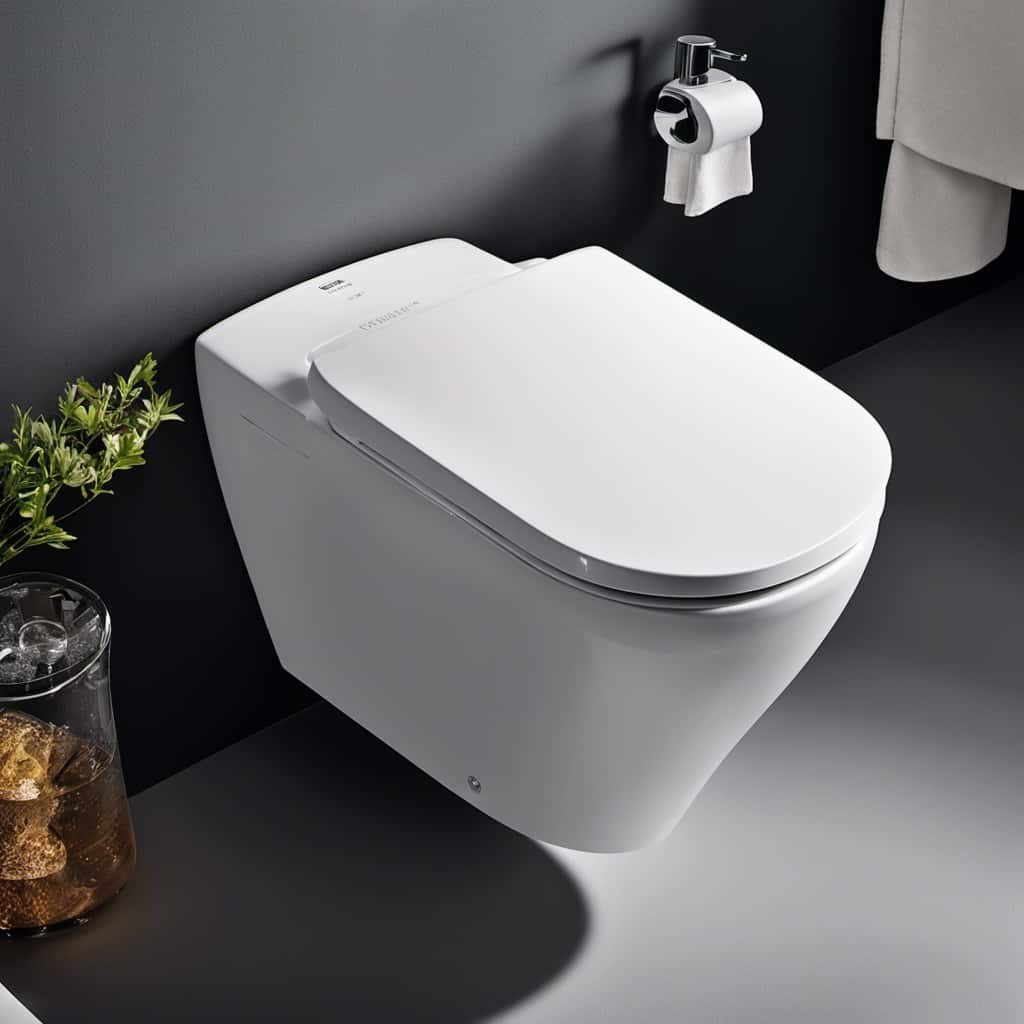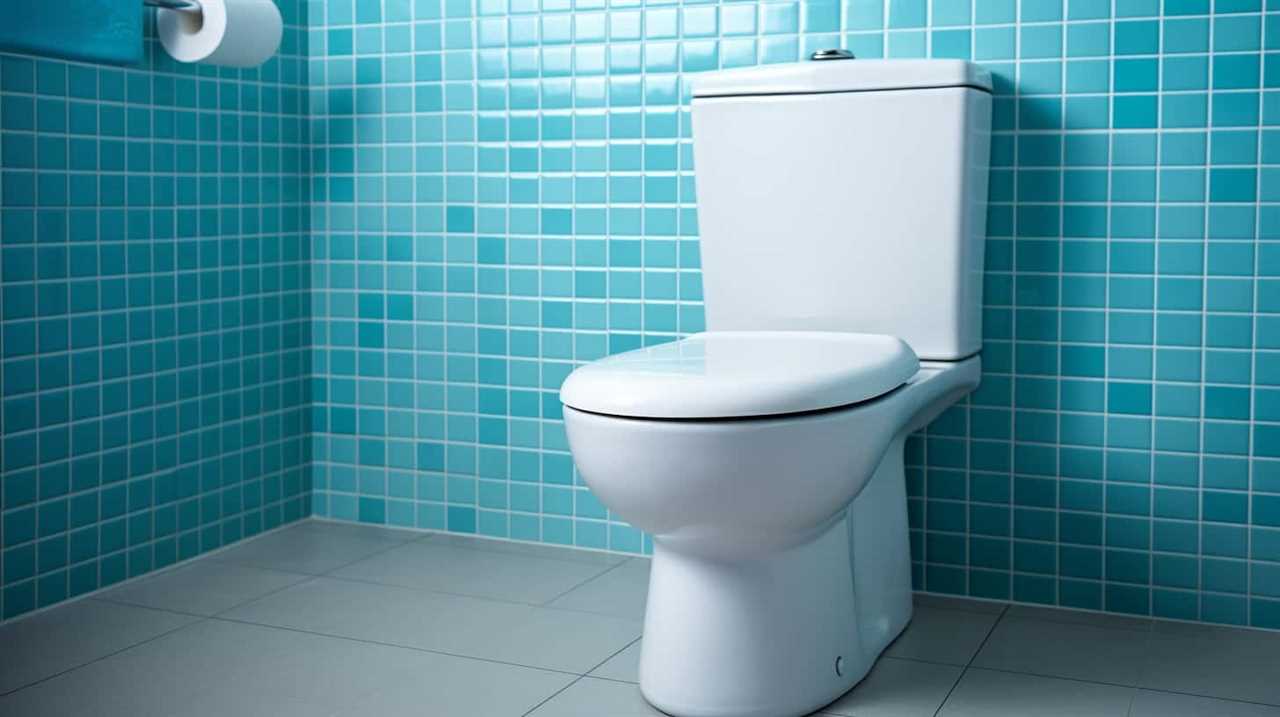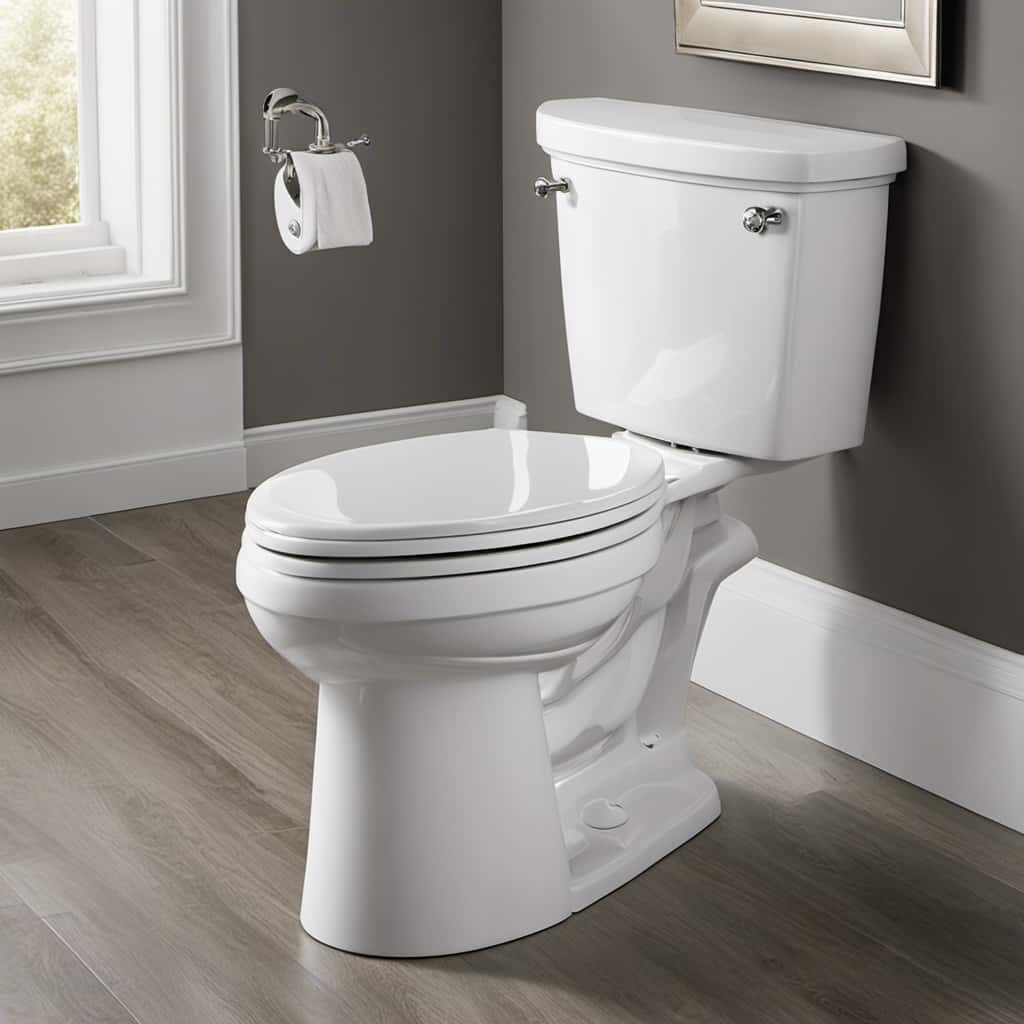Have you ever wondered if it’s safe to flush the toilet when your septic tank is backed up? Well, let us shed some light on this matter.
When faced with a backed-up septic tank, it’s crucial to understand the risks involved in flushing the toilet. In this article, we will explore the signs of a backed-up septic tank, the potential hazards of flushing, alternative options, and the necessary steps to take when dealing with this issue.
Let’s dive in and become septic tank backup experts!
Key Takeaways
- Signs of a backed-up septic tank include slow drainage, foul odors, water pooling in the yard, and potential sewage backup into the home.
- Flushing the toilet should be avoided when the septic tank is backed up.
- There are alternatives to flushing the toilet, such as composting toilets, dry flush toilets, portable camping toilets, and temporary use of bucket toilets.
- Steps to take when dealing with a backed-up septic tank include identifying the cause, clearing blockages, professional septic tank pumping if necessary, and implementing preventive measures for future backups.
Signs of a Backed-up Septic Tank
We will now discuss the signs of a backed-up septic tank.

When your septic tank is backed up, there are several common causes and signs that you should be aware of. One of the most obvious signs is slow drainage in your sinks, showers, and toilets. You may also notice a foul odor coming from your drains or in your yard near the septic tank. Another sign is water pooling in your yard or wet spots around the tank.
If you experience any of these signs, it’s crucial to address the issue promptly. Regular maintenance is key to avoiding a backed-up septic tank. To prevent blockages, avoid flushing non-biodegradable items such as wipes, sanitary products, and grease. Additionally, having your septic tank pumped regularly and inspecting it for any cracks or leaks can help maintain its functionality.
Risks of Flushing the Toilet With a Backed-Up Septic Tank
One of the major risks of flushing the toilet with a backed-up septic tank is the potential for sewage backup into your home. When the septic tank is already full or clogged, flushing the toilet can cause the sewage to flow in the opposite direction, leading to a backup. This can result in a variety of consequences that can be both inconvenient and costly.
Firstly, the sewage backup can cause extensive damage to your property, including flooring, walls, and furniture. Secondly, it poses serious health risks as sewage contains harmful bacteria and pathogens that can contaminate your living space. Furthermore, the cleanup process can be time-consuming and expensive, requiring professional assistance to ensure proper disinfection and restoration.

Therefore, it’s crucial to avoid flushing the toilet when the septic tank is backed up to prevent these potential risks and consequences.
Alternatives to Flushing the Toilet
To avoid the risks and consequences of flushing the toilet when the septic tank is backed up, we can explore alternative methods of waste disposal. Here are some eco-friendly solutions and water conservation techniques to consider:
- Composting toilets: These toilets use natural processes to break down waste into compost, which can be used as fertilizer for plants. They require little to no water and are a sustainable option.
- Dry flush toilets: These toilets use a special cartridge system to seal waste and eliminate odors. They don’t require water and are easy to install in areas without plumbing.
- Portable camping toilets: These are compact, self-contained units that can be used in emergencies or temporary situations. They typically use chemicals to break down waste and minimize odor.
- Bucket toilets: In situations where there’s no access to plumbing or alternative toilets, a bucket toilet can be used temporarily. Waste can be disposed of in a responsible manner, such as burying it in a designated area.
Steps to Take When Dealing With a Backed-Up Septic Tank
To effectively address a backed-up septic tank, it’s important to take prompt action and follow a series of necessary steps.
The first step is to identify the cause of the backup. Common causes of septic tank backups include a blockage in the drainage pipes or a full septic tank.

Once the cause is determined, the next step is to address the issue accordingly. If there’s a blockage, it can often be cleared by using a plumbing snake or a high-pressure water jet. If the septic tank is full, it may need to be pumped out by a professional.
After resolving the immediate issue, it’s crucial to implement preventive measures, such as regular septic tank maintenance and proper waste disposal practices, to avoid future backups.
Preventive Measures to Avoid Septic Tank Backup
We can prevent septic tank backups by implementing regular maintenance and proper waste disposal practices. Here are some preventive measures that can help avoid septic tank backup:
- Regular septic tank maintenance: Regular maintenance is essential for the proper functioning of a septic tank. This includes regularly inspecting the tank for any signs of damage or blockages and performing necessary repairs.
- Proper waste disposal: It’s crucial to dispose of waste properly to prevent septic tank backup. Avoid flushing items such as diapers, sanitary napkins, or cooking oil down the toilet or sink, as they can clog the system.
- Septic tank pumping: Regular septic tank pumping is necessary to remove accumulated sludge and prevent overflow. It’s recommended to have a professional pump the tank every 3-5 years, depending on the size of the household and usage.
- Water conservation: Conserving water can help prevent septic tank overload. Limiting water usage, fixing leaks promptly, and spreading out laundry and dishwashing tasks can reduce the strain on the septic system.
Frequently Asked Questions
How Can I Tell if My Septic Tank Is Backed Up?
To determine if our septic tank is backed up, we should look for signs like slow drainage, foul odors, and gurgling sounds. It’s crucial to address the issue promptly to avoid further problems and learn how to fix a backed up septic tank.

What Are the Potential Risks of Continuing to Flush the Toilet With a Backed-Up Septic Tank?
Continuing to flush the toilet with a backed-up septic tank can pose potential health hazards and have a negative environmental impact. It’s important to address the issue promptly to prevent further complications.
Are There Any Alternatives to Flushing the Toilet When My Septic Tank Is Backed Up?
There are alternative solutions to flushing the toilet when our septic tank is backed up. Proper septic tank maintenance, such as regular pumping and avoiding excessive water usage, can help prevent backups and ensure proper functioning.
What Steps Should I Take When I Encounter a Backed-Up Septic Tank?
First, we should stop using water in our home to prevent further backup. Then, we need to call a professional septic tank service to inspect and repair the problem.
What Preventive Measures Can I Take to Avoid Septic Tank Backup in the Future?
To prevent septic tank backup in the future, we can take preventive measures such as regular septic tank maintenance. This includes scheduling regular inspections, pumping out the tank as needed, and being mindful of what we flush down the toilet.

Conclusion
In conclusion, it’s crucial to avoid flushing the toilet if the septic tank is backed up. Doing so can lead to serious risks, including sewage backup into your home. Instead, consider alternative methods such as using a portable toilet or contacting a professional to address the issue.
Taking immediate steps when dealing with a backed-up septic tank is essential to prevent further damage. Interestingly, statistics show that septic tank backups can cost homeowners an average of $3,000 to $7,000 in repairs.










